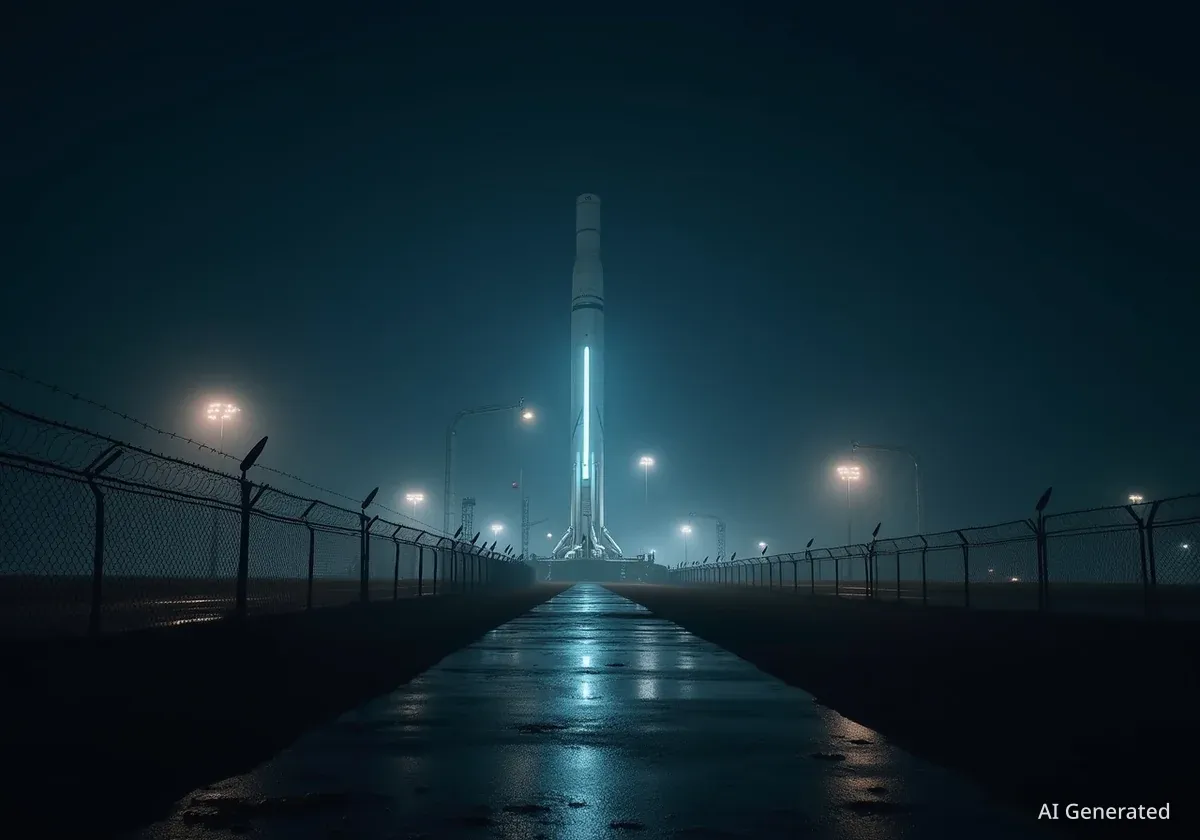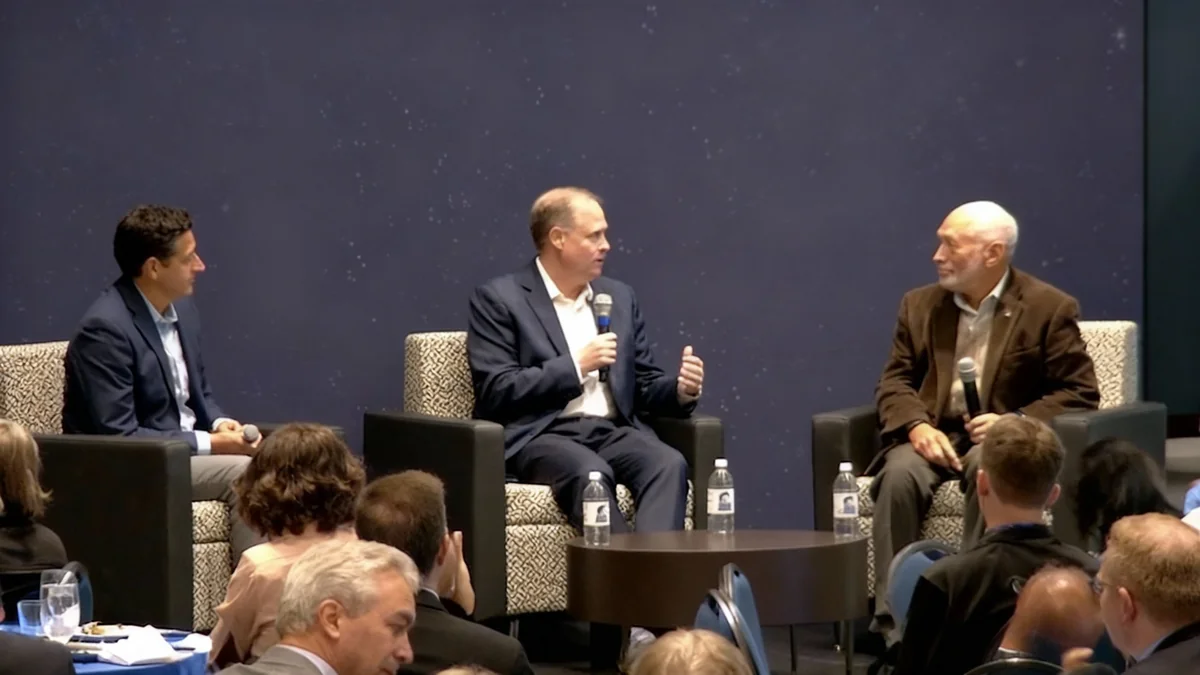The United States' ambition to return astronauts to the Moon faces significant delays, not due to a lack of innovation, but because of systemic issues within its industrial and regulatory frameworks. While public discussion often frames the situation as a direct "race" with China, analysts suggest the U.S. is struggling to even keep pace, as China's space program advances ahead of schedule, backed by a formidable industrial capacity.
Key Takeaways
- China's space program is advancing rapidly, with projections suggesting a lunar landing may occur one to two years ahead of its 2030 target.
- The U.S. Artemis program is hampered by delays and cost overruns, particularly with the Space Launch System (SLS).
- Regulatory burdens, including lengthy environmental reviews and permit processes, are slowing down the launch cadence of private U.S. companies like SpaceX.
- China's industrial base, featuring 51 rocket production sites across its seven largest launch companies, provides a significant advantage in manufacturing and scalability.
- Experts propose creating Special Economic Zones (SEZs) in the U.S. to accelerate space industry development by reducing bureaucratic obstacles.
Artemis Program Challenges and Delays
NASA's Artemis program, designed to land the first woman and first person of color on the Moon, is encountering substantial roadblocks. The initiative aims to mark the first American moonwalk since the Apollo 17 mission in 1972, but its timeline is under pressure.
The core of the program's delays centers on the Space Launch System (SLS), a super heavy-lift rocket developed by established aerospace contractors. According to a report from the Foundation for American Innovation, the SLS program has been criticized for significant budget overruns and for failing to meet its original launch readiness target of 2024.
While private innovation from companies like SpaceX is a key part of the Artemis architecture, it is not immune to delays. SpaceX's Starship, selected as the human landing system, has faced its own set of challenges, including test flight failures and prolonged investigations by the Federal Aviation Administration (FAA) following each test.
The Role of Regulation in Launch Cadence
A high launch cadence is critical for testing, refining, and validating the complex systems required for lunar missions. However, U.S. companies face a complex regulatory landscape. Extensive environmental impact statements and permitting processes can significantly reduce the number of possible launches per year, slowing down the collection of vital flight data.
China's Industrial and Technological Momentum
In contrast to the U.S. situation, China's state-led space program is demonstrating consistent and rapid progress. Chinese officials are not focused on the rhetoric of a "race" but are instead executing a long-term strategy built on industrial strength.
China's industrial capacity for space hardware is a key differentiator. The country has cultivated a robust ecosystem with 51 rocket production facilities distributed among its seven largest space launch companies. This creates a level of manufacturing overcapacity that allows for rapid scaling and production, an industrial base the U.S. has not prioritized over recent decades.
This industrial advantage translates into tangible technological achievements.
- In July, China successfully performed the first orbital refueling between two satellites, a critical capability for long-duration missions that U.S. companies have yet to achieve in orbit.
- In August, China completed an integrated landing and takeoff test of its Lanyue lunar lander, a major milestone for its crewed lunar ambitions.
Based on these advancements, analysts project that Chinese taikonauts are likely to reach the Moon one or two years ahead of the nation's official 2030 target. This could allow China to establish a lunar base at strategic locations, such as the resource-rich lunar south pole, before the United States arrives.
Did You Know?
While the United States currently leads in overall launch cadence, this statistic is heavily skewed by the performance of a single company, SpaceX. China's strategy focuses on a broader industrial base rather than relying on one primary launch provider.
Regulatory Hurdles Slowing U.S. Innovation
Beyond the challenges facing NASA's large-scale programs, the broader U.S. commercial space industry is also constrained by regulatory friction. These bureaucratic hurdles can delay missions and increase operational costs for innovative companies.
The Varda Space Industries Case
A prominent example involves Varda Space Industries, a company developing in-space manufacturing for pharmaceuticals. After a successful initial mission, its reentry capsule was stranded in orbit for over eight months while the company awaited a reentry permit from the FAA. This delay highlights how administrative processes can impede the progress of commercial space ventures.
"The cumulative effect of this regulatory thicket is a reduced launch cadence. This has enormous implications for the ability of the U.S. to get into space and beat China to the moon."
SpaceX CEO Elon Musk has also publicly commented on the extensive nature of environmental reviews, which he stated included requirements to conduct studies on the effects of sonic booms on seals and to write historical reports on the Mexican-American War. Such requirements, while part of a comprehensive legal framework, can divert resources and time from core engineering goals.
A Proposed Solution: Special Economic Zones
To counteract these domestic challenges, some policy experts are advocating for a new approach modeled on a strategy that fueled China's own economic growth: Special Economic Zones (SEZs).
In the late 1970s, China established SEZs in regions like Shenzhen. These zones offered freedom from many bureaucratic and regulatory burdens, which successfully attracted foreign investment and spurred rapid industrial development. In 1979, Shenzhen was a small city of around 30,000 people; today, it is a global technology hub with a population in the tens of millions.
The Foundation for American Innovation has proposed a similar concept for the U.S. space industry, termed the "Space Coast Compact." This would be an interstate agreement between states like Texas, Florida, Louisiana, Mississippi, and Alabama to create an SEZ for space companies. Within this zone, enterprises could operate with streamlined regulations, allowing them to focus on scaling operations and increasing launch frequency.
Such a compact could facilitate the construction of new spaceports, rocket production facilities, and propellant farms. It would also support companies working on other aspects of the space economy, including in-space manufacturing and lunar infrastructure. By removing bureaucratic obstacles, proponents argue, the U.S. could unleash its innovative potential and create a more competitive footing in the global space landscape.





